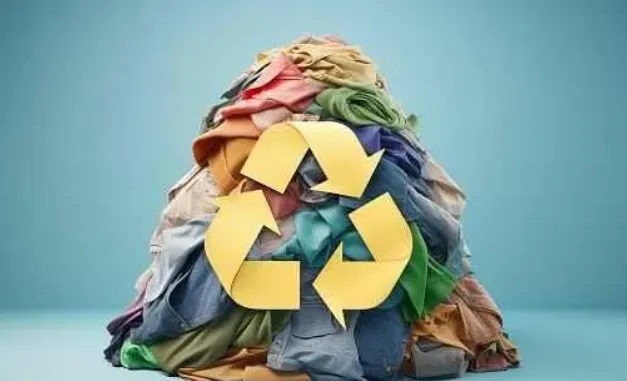Contents
Key Takeaways
- Understanding the importance of recycling textiles in reducing waste and promoting sustainability
- Exploring various innovative approaches used in textile recycling
- Providing practical tips for consumers to participate in textile recycling
Introduction to Textile Recycling
Textile recycling is essential in addressing the growing problem of textile waste. Every year, millions of tons of clothing and other textile products end up in landfills, contributing significantly to environmental pollution. Recycling textiles involves collecting and processing used garments and materials to create new products, reducing the demand for new resources. This helps conserve natural resources and lowers the carbon footprint of producing new textiles. The process can include everything from repurposing old fabrics into new clothing items to breaking down fibers and re-spinning them into new yarns.
Incorporating the benefits of sustainable manufacturing into textile recycling further enhances its positive impact. Encouraging the implementation of sustainable manufacturing processes, such as using eco-friendly dyes, minimizing energy and water consumption, and cutting down on waste, can enhance the effectiveness and eco-friendliness of recycling. These methods help reduce the overall environmental impact and support the development of top-quality recycled goods. By integrating recycling and sustainable manufacturing, the textile industry can substantially lessen its adverse ecological effects while fulfilling the escalating consumer demand for sustainable and ethically produced products. This strategy encourages environmental responsibility and fosters innovation and economic advancement within the industry.
Why Recycling Textiles Is Crucial
Recycling of textiles plays a vital role in decreasing landfill waste, preserving natural resources, and reducing greenhouse gas emissions. The Environmental Protection Agency (EPA) states that the annual production of textile waste is immense, with millions of tons deposited in landfills yearly. This adds to environmental contamination and significantly depletes valuable raw materials. The EPA asserts that textile recycling has the potential to reclaim approximately 95% of the waste, presenting a significant opportunity to alleviate the environmental impact and safeguard resources.
Recycling textiles reduce landfill stress, saves billions of gallons of water, reduces the need for pesticides and fertilizers, and contributes to a healthier ecosystem. The production of new clothing releases CO2, whereas recycled textiles use less energy, leading to a reduced carbon footprint and a noteworthy decrease in greenhouse gas emissions. Recycling also brings economic advantages by establishing a secondary market for recycled materials, generating employment opportunities, and fostering economic expansion. This transition to a circular economy helps conserve resources and optimize the financial worth of materials.
Innovative Approaches in Textile Recycling
The textile industry has seen numerous innovative approaches to recycling. Methods such as chemical recycling, mechanical recycling, and using biodegradable fibers are gaining popularity. Chemical recycling breaks down materials at the molecular level, allowing complex blends to be separated and reused. For instance, this method can effectively recycle polyester or nylon, converting them into raw materials that are as good as new. Mechanical recycling involves shredding fabric into fibers that can be spun into new yarn. This method is more straightforward but best suited for textiles of a single fiber type. Biodegradable fibers, such as those made from natural and renewable resources, are also at the forefront of sustainable textiles. These fibers decompose naturally, reducing the longevity of waste in landfills and providing an eco-friendly alternative to traditional materials.
Furthermore, advancements in automatic sorting technology have significantly improved the efficiency and accuracy of recycling plants. These systems can quickly and accurately sort textiles by type and color, which helps streamline the recycling process and increases the purity and quality of recycled fibers. The potential of nanotechnology to improve recycled fibers—making them more resilient and adaptable for a range of uses—is being investigated.
How Consumers Can Contribute
- Donate unwanted clothes to charities or recycling centers: Many organizations accept used clothes, diverting them from landfills and extending their lifespan. Donated clothes can be given to those in need or sold to generate funds for charity.
- Participate in local recycling programs: Check for textile recycling programs in your area and utilize them for old and discarded items. Some municipalities offer curbside textile recycling, making it convenient for consumers to participate.
- Opt for clothing made from recycled materials: Support brands prioritizing sustainability and using recycled fibers in their products. This decision pushes the market for recycled textiles and encourages more businesses to use environmentally friendly procedures.
- Repair and upcycle old garmentsto extend their life: Instead of discarding clothes at the first sign of wear, repair or repurpose them. Upcycling can involve creative projects like turning old jeans into a stylish bag or transforming a worn-out shirt into a trendy headband.
Consumers can also educate themselves about the environmental impact of the textiles they purchase. Governments, businesses, and academic institutions working together will spur innovation and sustainability in the textile sector. Supporting local and artisanal producers who use eco-friendly materials and methods is another way to contribute positively.
Future Trends in Textile Recycling
Textile recycling is poised for a bright future with advancements in material science and recycling technologies. Artificial intelligence and automation will improve efficiency and output in recycling plants, reducing labor costs and improving the quality of recycled fibers. Governments, businesses, and academic institutions working together will spur innovation and sustainability in the textile sector. Policies promoting circular economies are gaining traction worldwide, and governments can incentivize companies to adopt circular practices and invest in recycling infrastructure. The growing consumer demand for sustainable products pushes the industry towards eco-friendly practices. Brands that embrace transparency and responsible practices will thrive in this evolving landscape. Governments, businesses, and consumers working together will be essential to drive textile recycling in the future.









